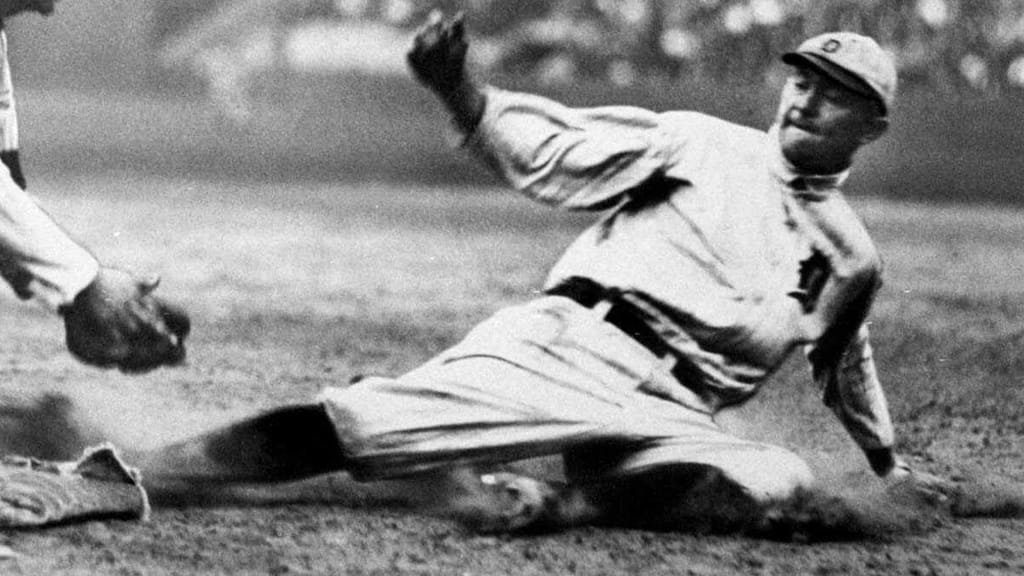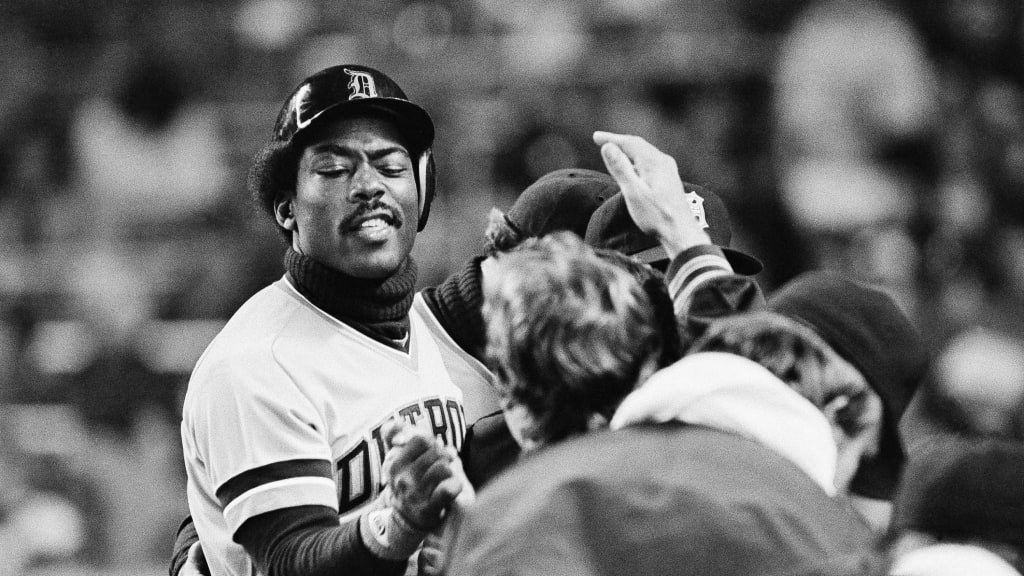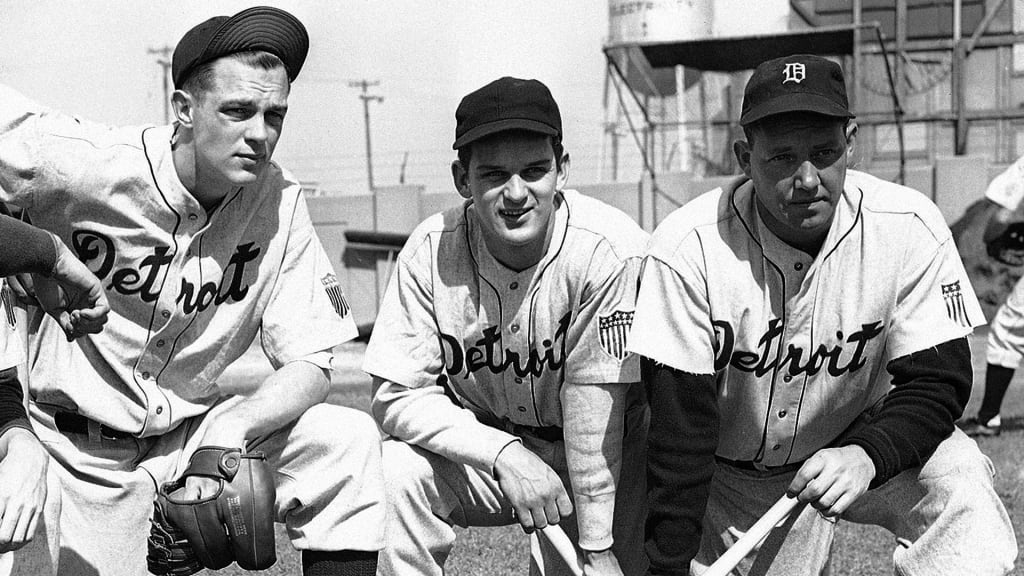
No one loves a good debate quite like baseball fans, and with that in mind, we asked each of our beat reporters to rank the top five players by position in the history of their franchise, based on their career while playing for that club. These rankings are for fun and debate purposes only. If you don’t agree with the order, participate in the Twitter poll to vote for your favorite at this position.
Here is Jason Beck’s ranking of the top five center fielders in Tigers history. Next week: right field.
1. Ty Cobb, 1905-26
Key facts: MLB all-time leader with .366 average; second with 4,189 hits, 2,245 runs scored
The plaque positioned outside the administrative entrance at Comerica Park calls Cobb the “Greatest Tiger of All / A Genius in Spikes.” Nearly a century after Cobb’s playing days, and 57 years after the plaque debuted at Tiger Stadium, the case still holds. Though Cobb played most of his career in a far different game during the Dead Ball Era, his numbers have stood the test of time, from a .366 batting average to 4,189 career hits. His 149.3 fWAR ranks fourth all-time behind Babe Ruth, Barry Bonds and Willie Mays.
Until Miguel Cabrera’s 2012 season, Cobb was the only Triple Crown hitter in club history, having hit .377 with nine homers and 107 RBIs as a 22-year-old in 1909. He also led the league in runs scored, stolen bases, OPS and total bases that year. Two years later, he became the first American League Most Valuable Player, winning the Chalmers Award by leading the league with a .419 average, 47 doubles, 24 triples, 127 RBIs, 83 stolen bases, 367 total bases and a 1.086 OPS.
Cobb led the AL in batting average 12 times, doubles three times, triples and RBIs four times and runs scored five times. He also led the league in OPS 10 times, including a 1.066 mark as a 38-year-old in 1925. His personality was controversial, but his greatness on the field was undisputed.
"Baseball is a red-blooded sport for red-blooded men,” Cobb was once quoted as saying. “It's no pink tea, and mollycoddles had better stay out. It's a struggle for supremacy, a survival of the fittest."
2. Chet Lemon, 1982-90
Key fact: Voted as an All-Star starter in 1984
Imagine the reaction had Twitter been around when Tigers general manager Jim Campbell traded young slugger Steve Kemp, who had back-to-back 20-homer, 100-RBI seasons under his belt, to the White Sox for Lemon, a two-time All-Star who filled a need in center field but had yet to top 20 homers. It was a talent-for-talent swap of two players nearing free agency, and it proved to be a key to the Tigers’ eventual rise to World Series champions three years later.
Though Lemon earned a lone All-Star selection as a Tiger, voted as a starting outfielder in 1984, he was a consistently great two-way player who filled center field for a good chunk of the 1980s while providing depth to Detroit’s lineup. His acrobatic grab of Terry Kennedy’s drive to deep center field at Tiger Stadium was one of the key plays in Game 3 of the 1984 World Series. Sparky Anderson called him the greatest center fielder he had seen in all his years in the game.

3. Curtis Granderson, 2004-09
Key fact: Only Major Leaguer in last 40 seasons to hit .300 with 30+ doubles, 20+ triples and 20+ home runs in same season
Granderson’s Tigers tenure didn’t last long, just four full seasons and parts of two others. However, his arrival through the farm system was as important as any free agent in Detroit’s rise from 119 losses in 2003 to the World Series in '06. He was a two-sport star in high school who committed to baseball full-time at Illinois-Chicago before the Tigers made him a third-round pick in the '02 MLB Draft.
Once Granderson stuck in Detroit for good in 2005, he became the prototypical Comerica Park center fielder, combining speed, intelligence and instincts to cover the ballpark’s wide gaps. At the same time, he took advantage of those vast gaps to slash doubles and triples galore. Though Magglio Ordonez finished runner-up to Alex Rodriguez for AL MVP in 2007, Granderson arguably had the better all-around season, finishing second to A-Rod in bWAR.
Granderson earned his first All-Star selection in 2009 but slumped down the stretch. After the season, the Tigers traded him to the Yankees in the three-team deal that brought Max Scherzer and Austin Jackson to Detroit. The swap set the stage for the Tigers’ four-year run of division titles, but it still was unpopular given Granderson’s impact on the field and in the community.
4. Mickey Stanley, 1964-78
Key facts: Four-time Gold Glove winner; tied AL record with 11 putouts in center field on July 13, 1973
Stanley will always be remembered in Detroit for his move to shortstop for the 1968 World Series, allowing Al Kaline to play a key role in the Fall Classic. But Stanley was an outstanding center fielder who won three straight Gold Gloves as an outfielder from '68-70. The Grand Rapids native was also an underrated clutch hitter who batted .315 and .306 with runners in scoring position in '68 and '69, well above his .259 and .235 batting averages in those respective seasons.
“Everybody knew he was the best athlete on the team,” Kaline said of Stanley a couple of years ago.
5. Barney McCosky, 1939-42, 1946
Key fact: Three consecutive .300 seasons to begin career
McCosky might have been one of the greats of his era in Detroit had he not given three years in his prime to serve in World War II. Signed out of Detroit’s Southwestern High School, he was a .300 hitter in each of his first three Major League seasons and led the league with 200 hits and 19 triples in 1940. His efforts that year helped lead the Tigers to a World Series appearance, where he reached base safely 14 times in 30 plate appearances in a seven-game loss to the Reds. He didn’t return from the armed services in time to help the Tigers in the '45 World Series. After a slow start in '46, he was traded to the Philadelphia A’s in mid-May for third baseman George Kell.

Honorable mention: Austin Jackson, 2010-14
Key fact: 15.2 bWAR from 2010-12 leads all Tigers in first three Major League seasons
Jackson’s five-year Tigers tenure might always be remembered for its abrupt end, called off the field in the middle of an inning to be traded to Seattle in the David Price deal. But for Jackson’s first three seasons, he was an outstanding two-way player whose work in center field helped soothe Detroit’s wounds over the Granderson trade that brought Jackson to the Motor City. Jackson was a 5.1 bWAR player as a rookie in 2010, led the Majors with 26 Defensive Runs Saved in center field in '11, then hit .300 with 29 doubles, 10 triples and 16 homers in '12, when he was a driving force behind the Tigers’ run to the World Series.


